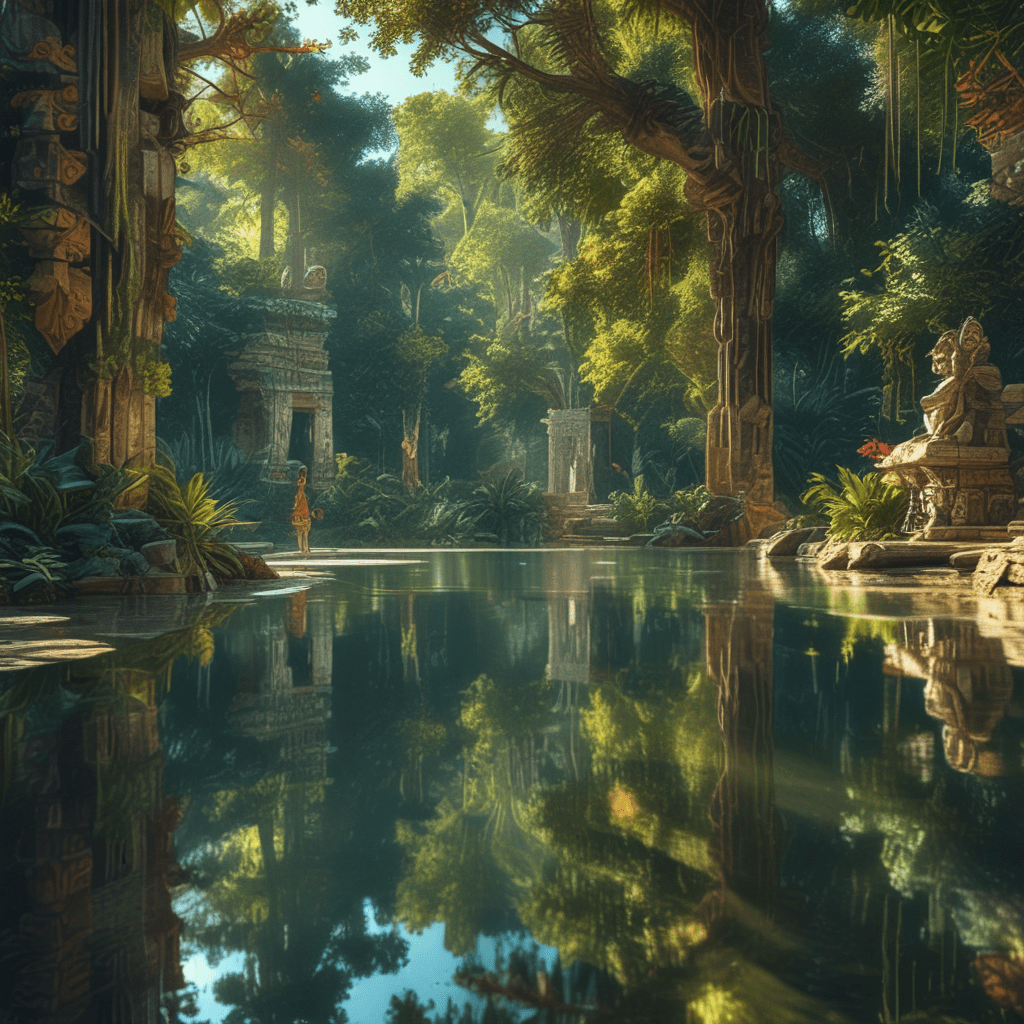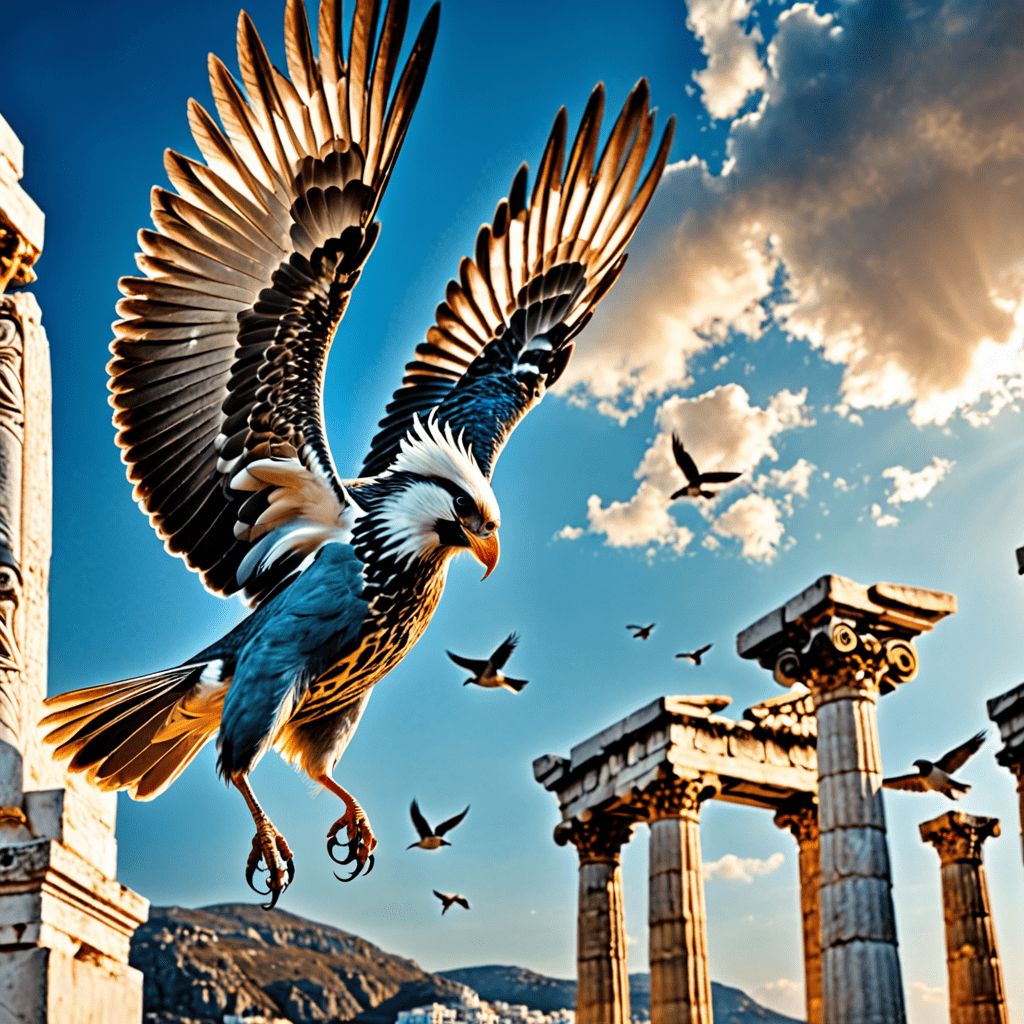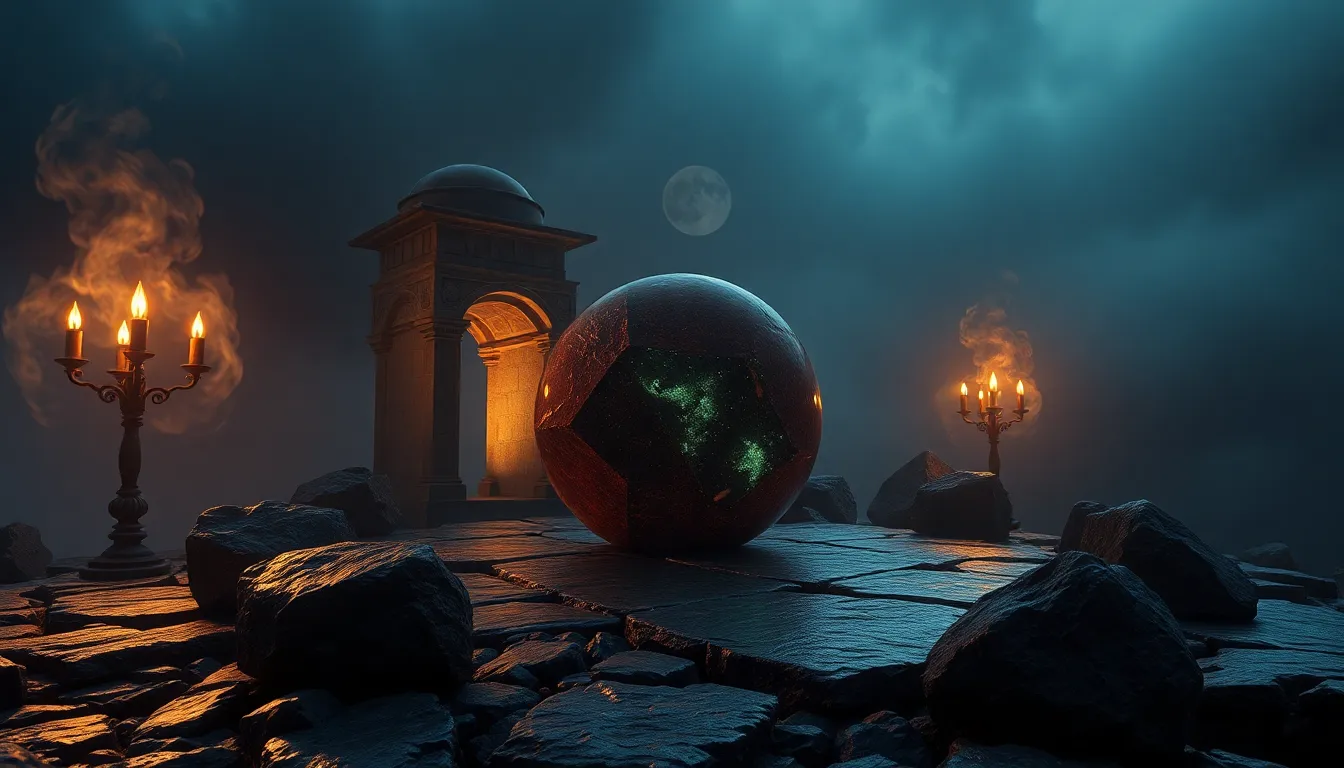1. Introduction: A Glimpse into the Maya's Sacred World
The Maya civilization, renowned for its advanced astronomy, mathematics, and intricate art, also held a profound connection with nature. This connection manifested in their creation of stunning mythological gardens, which served as earthly reflections of paradise. These gardens, imbued with symbolism and meaning, were not mere aesthetic marvels but held deep spiritual and cosmological significance.
2. The Mythological Origins of the Gardens
The origins of these gardens lie within the rich tapestry of Maya mythology. According to legend, the gods created the first garden in the mythical underworld of Xibalba. This primordial garden, known as Paxil, was a place of abundance, where maize, cacao, and other precious crops flourished. It was also the dwelling of the Maize God, who bestowed fertility and sustenance upon the Maya people.
3. The Gardens as Representations of Paradise
The Maya viewed their gardens as earthly representations of paradise, mirroring the mythical Paxil. These gardens were meticulously planned and adorned with symbolic elements that evoked the ideal state of existence. Water features, representing life-giving forces, were central to these gardens, while sacred trees, such as the Ceiba, symbolized the connection between the earthly and celestial realms.
4. Symbolism and Meaning within the Gardens
Every element within the Maya gardens held symbolic significance. Flowers represented beauty and fertility, while animals like the jaguar symbolized power and royalty. The placement of these elements was not random but followed specific patterns reflecting Maya cosmology and beliefs about the universe.
5. The Importance of Water and Fertility
Water played a crucial role in Maya culture and was considered sacred. In their gardens, water features like pools, canals, and fountains symbolized the life-giving forces that sustained both the natural world and the Maya people. The abundance of water also reflected the Maya's desire for fertility and prosperity.
6. The Role of the Ceiba Tree and Other Sacred Plants
The Ceiba tree, considered sacred by the Maya, played a prominent role in their gardens. This towering tree, with its expansive branches reaching towards the heavens, symbolized the connection between the earthly and celestial realms. The Ceiba was also associated with the World Tree, a central concept in Maya cosmology that represented the axis mundi, connecting the underworld, the earthly plane, and the heavens.
Other sacred plants, such as cacao, maize, and copal, were also incorporated into the gardens. Cacao, a symbol of abundance and prosperity, was used in rituals and offerings to the gods. Maize, the staple food of the Maya, represented sustenance and life. Copal, a fragrant resin, was burned as incense to purify the air and invite the presence of the gods.
7. The Gardens in Maya Art and Architecture
The significance of the gardens was reflected in Maya art and architecture. Murals and sculptures depicted scenes of paradise-like gardens, while temples and palaces were often adorned with motifs of water, trees, and flowers. The layout of Maya cities also mirrored the structure of the gardens, with plazas and courtyards serving as symbolic representations of the sacred enclosures.
8. The Gardens as Reflections of Maya Cosmology
The Maya gardens were not merely aesthetic creations but served as earthly reflections of their complex cosmology. The placement of elements within the gardens, such as the four cardinal directions, mirrored the Maya belief in the quadpartite universe. Water features represented the underworld, while the Ceiba tree symbolized the World Tree connecting the different realms.
9. The Gardens in Contemporary Maya Culture
Although the ancient Maya civilization has long since vanished, the legacy of their gardens continues to inspire and inform contemporary Maya culture. Traditional Maya communities still maintain sacred gardens, where rituals and ceremonies are performed to connect with the ancestors and the spirit world. These gardens serve as living reminders of the Maya's profound connection to nature and their enduring belief in the existence of paradise.
10. Conclusion: The Enduring Legacy of the Mayan Gardens
The Mayan mythological gardens were more than just beautiful landscapes; they were sacred spaces that reflected the Maya's profound connection to nature, their complex cosmology, and their belief in paradise. These gardens served as earthly reflections of the mythical Paxil, a place of abundance and harmony, and continue to inspire and inform contemporary Maya culture. Through their meticulous planning, symbolic elements, and spiritual significance, the Mayan gardens offer a glimpse into the rich and vibrant world of Maya mythology and their enduring legacy.
FAQ
What are the most famous Mayan mythological gardens?
Some of the most famous Mayan mythological gardens include the Hanging Gardens of Xochicalco, the Gardens of Ek Balam, and the Gardens of Tikal.
What are the main characteristics of Mayan mythological gardens?
Mayan mythological gardens were typically characterized by their use of water features, sacred trees, and symbolic plants. They were also meticulously planned and reflected Maya cosmology and beliefs about the universe.
What is the significance of the Ceiba tree in Mayan mythology?
The Ceiba tree was considered sacred by the Maya and symbolized the connection between the earthly and celestial realms. It was also associated with the World Tree, a central concept in Maya cosmology.
How do the Mayan gardens reflect Maya cosmology?
The placement of elements within the Mayan gardens, such as the four cardinal directions, mirrored the Maya belief in the quadpartite universe. Water features represented the underworld, while the Ceiba tree symbolized the World Tree connecting the different realms.
Do Mayan communities still maintain sacred gardens today?
Yes, traditional Maya communities still maintain sacred gardens, where rituals and ceremonies are performed to connect with the ancestors and the spirit world. These gardens serve as living reminders of the Maya's profound connection to nature and their enduring belief in the existence of paradise.



